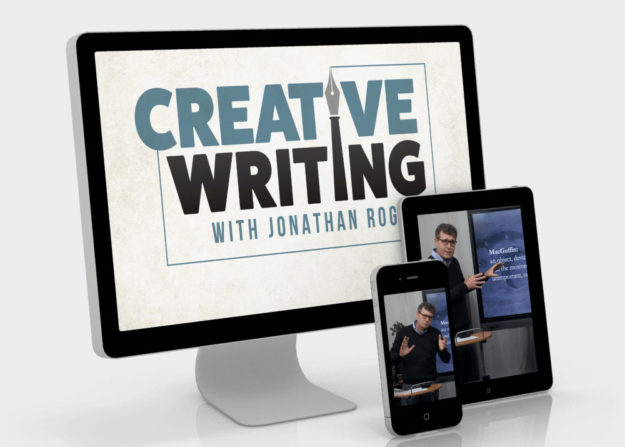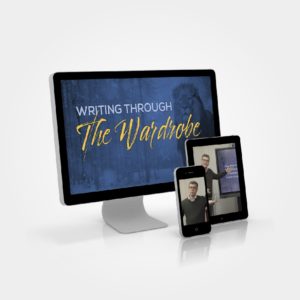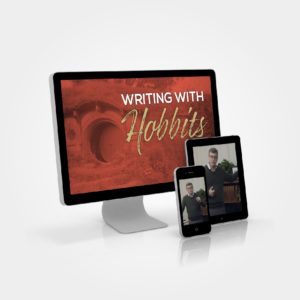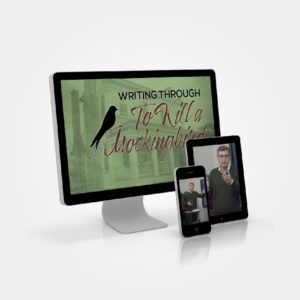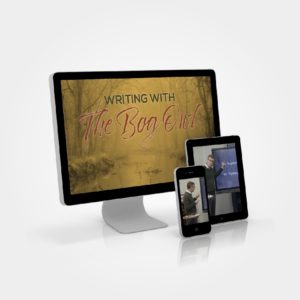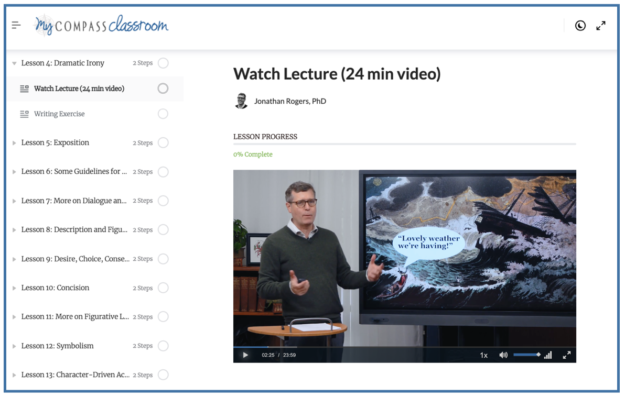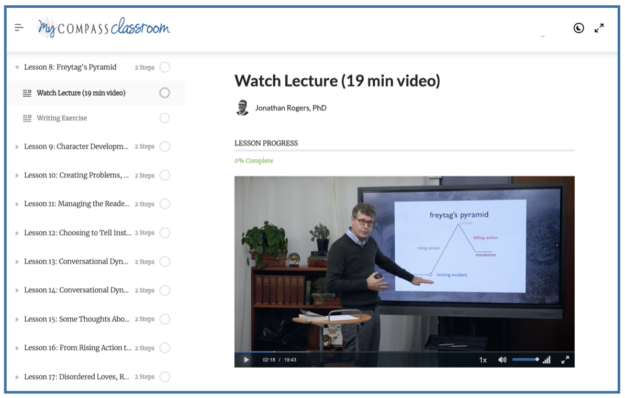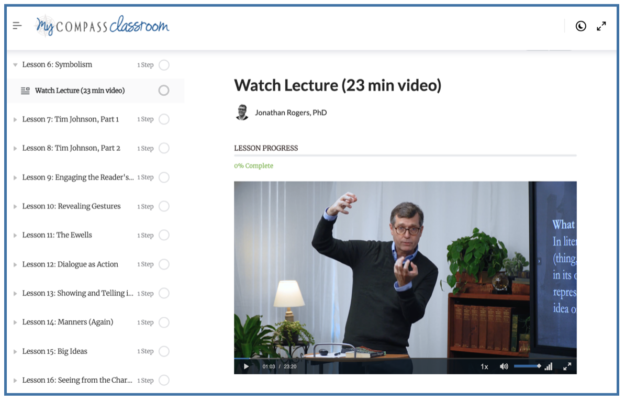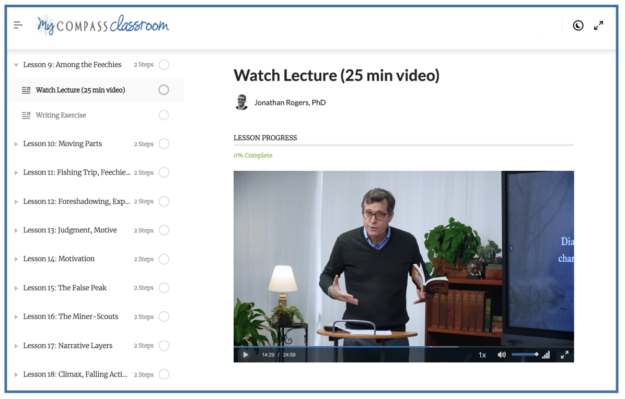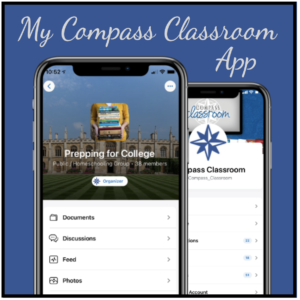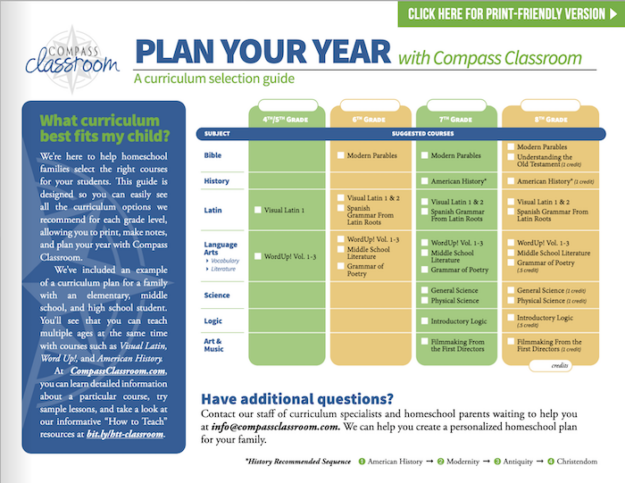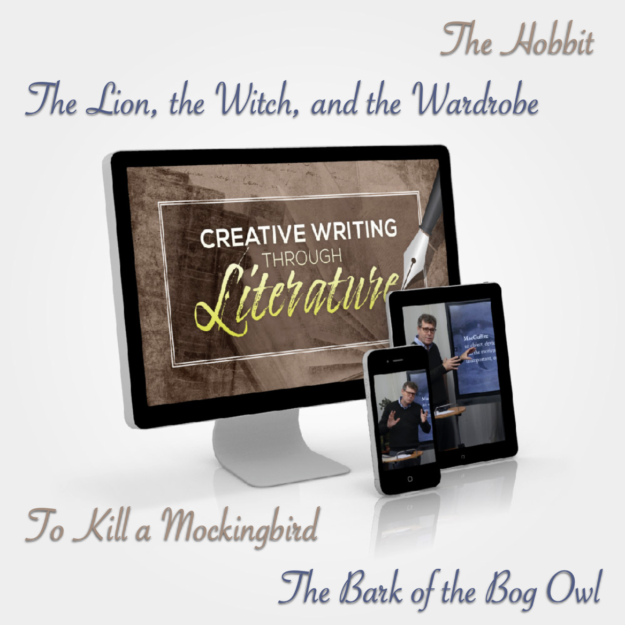
As we drive to church with our teenagers talking nonstop about literary elements, I realize we’ve hit a unique treasure in the realm of homeschool curriculum choices. While we’ve often enjoyed discussing literature as a family, this particular discussion soars far higher and dives far deeper than any discussion I have led. I marvel – and for more than one reason.
Creative writing has never really been a particular gifting of mine (as a student or a teacher). While I love reading literature, I’ve never loved writing literature. And so…. as our second son has ventured into writing other-worldly fiction, it’s only fitting that he connect with a group of “inklings” who love writing and/or love discussing the process of writing as much as he does. His inklings happen to be his brother, a couple of close friends, and some authors/instructors who have this same love of communicating truth through fiction (namely, Andrew Peterson and Jonathan Rogers, although he does not know either of these authors personally).
After writing a novella during his ninth grade year, our son was searching for a course to better hone his work of fiction. Because he had already learned so much from his previous writing curricula, every single program we came across for creative writing introduced almost nothing new. It was not until we discovered the course Creative Writing with Jonathan Rogers that he was able to venture into new and exciting territory with his writing.
Creative Writing with Jonathan Rogers takes students through the literary elements of four great works of fiction – The Lion, the Witch, and the Wardrobe; The Hobbit; To Kill a Mockingbird; and The Bark of the Bog Owl – to improve their own writing. Each book is covered in a separate video-based course consisting of 17 to 18 lessons each and may be taken independently, or they may be taken together to earn a half credit (or semester) of high school literature/composition (or a full credit at the middle school level).
- Writing through the Wardrobe
- Writing with Hobbits
- Writing through To Kill a Mockingbird
- Writing with the Bog Owl.
Using literary classics, these courses provide instruction in composing fiction through the classical approach of imitation. Students learn to analyze the elements of literature, including setting, plot, characterization, imagery, irony, and more, while also learning how authors succeed in effectively developing setting, character, plot, and theme. Each course focuses on specific techniques used by authors to convey meaning in their stories.
In Creative Writing with Jonathan Rogers, students examine the literary elements from great works of literature and then practice using those elements with specific writing exercises designed to help aspiring authors build confidence in their own voice.
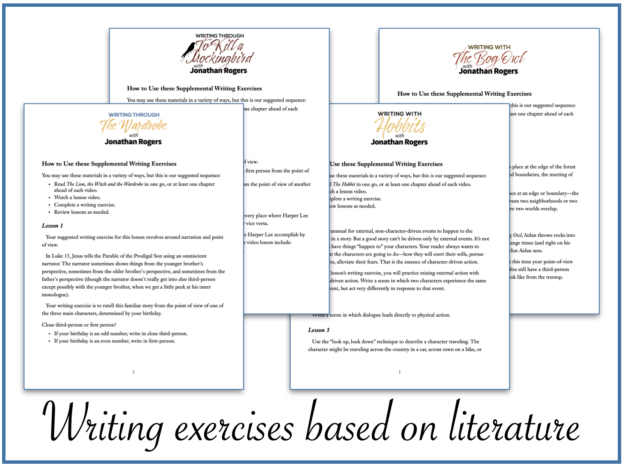
Each 20-30 minute video lecture is followed by a corresponding exercise in which students practice a variety of storytelling techniques, including (but not limited to) writing from different perspectives and points-of-view, composing effective dialogue, and crafting captivating narratives. Each course explores specific writing techniques with literary scholar and published author Jonathan Rogers as the instructor.
Writing through the Wardrobe
Writing through the Wardrobe consists of 18 lessons in which students learn the techniques of description, dialogue, and pacing used by C.S. Lewis to create his beloved classic The Lion, the Witch, and the Wardrobe.
Writing through the Wardrobe includes a study of world-building, point of view, character-driven action, dramatic irony, dialogue, figurative language, and much more. After each lesson, the student practices the literary element discussed in the video lecture through thought-provoking exercises, such as:
Sample Exercise 1:
In Luke 15, Jesus tells the Parable of the Prodigal Son using an omniscient narrator. The narrator sometimes shows things from the younger brother’s perspective, sometimes from the older brother’s perspective, and sometimes from the father’s perspective (though the narrator doesn’t really get into close third-person except possibly with the younger brother, when we get a little peek at his inner monologue).
Your writing exercise is to retell this familiar story from the point of view of one of two main characters. Retell the parable using the older brother as a first-person narrator. Or, retell the parable in close third-person from the perspective of the father.
Sample Exercise 2:
In one paragraph, describe a person (fictional or real). But here’s the catch: You can’t describe the character directly. You can only describe one room in the character’s house. To put it another way, describe a room in such a way that the reader feels that he or she knows the person who lives there.
Through a combination of lectures and exercises, this course not only explores how to create characters and setting, but it has helped our son in further developing the characters and setting within his own work of fiction. Not only that, but after taking this course, our son picked up a copy of The Abolition of Man to read of his own accord because of a reference to “men without chests.” This was one of many fascinating discussion points in our drive to church as our boys mulled over ways that Edmund and Eustace both represented men without chests. (And I’m all for a writing course that causes my children to voluntarily read and discuss other {challenging} literature that isn’t even assigned!)
Writing with Hobbits
In Writing with Hobbits, Jonathan Rogers guides students through Tolkien’s The Hobbit in 17 lessons to learn how to create distinct character voices (such as Gollum’s manner of speech) and how to incorporate other genres—like travel writing—into their fiction.
Course content includes Freytag’s pyramid, grammar and sentence structure, conversational dynamics, scene-setting, and much more. Students practice mixing external action with character-driven action, writing dialogue that leads to physical action, and analyzing the speech patterns of famous characters from literature (such as Huck Finn). One of the most helpful aspects of this particular course was learning to move from out-of-scene (distant) narration to in-scene (close) narration. In The Hobbit, Tolkien often zooms out-of-scene to give a bigger picture that makes it feel like what’s happening in the story is really happening, even though it’s set in the world of Middle Earth. As we listen to or read stories together as a family, we’re starting to recognize many of these techniques in each author’s writing. And it’s causing us to love literature even more!
Writing Through To Kill a Mockingbird
Writing Through To Kill a Mockingbird consists of 17 lessons in which Jonathan Rogers explores the symbolism, point of view, characters, and pacing of Harper Lee’s great American classic, To Kill a Mockingbird.
This course further develops the idea of writing in-scene and out-of-scene and includes other concepts such as exploring mannerisms and manners, revealing gestures, engaging the reader’s judgment, and using reality as a source of fiction. The lectures and exercises have been especially helpful in scaling back abstract descriptions to improve writing.
Writing with the Bog Owl
In Writing with the Bog Owl, Jonathan Rogers explores his own work of fiction, The Bark of the Bog Owl, and shares the influences on his writing and condenses his advanced studies of literature into 18 lessons. This course provides an inside look into the mind of an author, what that author meant to convey, and what he wish he had done differently (among other things). Listening to a published author explain his own successes and failures has been a tremendous encouragement to our son!
This course includes a study of narrative layers, false peaks, foreshadowing, incongruity, and more. Rogers uses his own experiences as an author and even points out his mistakes that he’s noticed as he’s matured in his knowledge and experience. Our son feels that he’s been given such a gift as he’s learned how to avoid the mistakes of a published author.
Final Thoughts
In answer to the question “Which course is your favorite?” our son responds, “All of them.” He continues…
Before this course, I knew how to create the outer shell of a story. I knew the words and ideas, but I couldn’t make my story actually convey what I wanted it to convey. Many courses tell you how to make a story, but not how to make a good story – a story that feels real even if it is set in a fictional world. This course has taught me how other authors have used literary elements and then has provided the opportunity to practice those techniques myself. Jonathan Rogers gives specific examples from each work of fiction and then designs exercises that help us to put what we see into practice. This course has taught me how to put a core into the outer shell – to develop a deeper, more meaningful story.
This course has not only provided our son new insight into writing, but it has also been a tool for better understanding and analyzing literature in general. These courses helped our son to not just write a paper or a short story, but to develop his ideas into a novel. The video lectures and writing assignments have been extraordinarily inspiring, fascinating, and helpful, teaching our son literary techniques he had never previously considered. As a parent, I even found myself taking notes on aspects of literature that apply to everyday life. Literature reflects and reveals truth in such profound ways!
Every course in Creative Writing with Jonathan Rogers taught our son new things about conveying meaning in the stories he writes. Even though the courses repeat material common to all stories (such as Freytag’s pyramid), they do so in different ways, providing valuable repetition that does not become boring. Each course builds upon what is taught in the other courses and yet each course can also stand alone for those who want to explore just one work of literature.
A student that goes through this course will not only become a better writer, but s/he will also become a better reader. This course is especially helpful to students who are wanting to improve their fiction writing, but it will also benefit students who would like to better understand literature. Creative Writing with Jonathan Rogers may be used with students with or without a basic background in story writing, and it would be an excellent counterpart to literary analysis. We honestly cannot recommend this course enough!
Try it out for free!
Click here to try 8 free lessons (2 from each course).
This program is also one of over 30 courses offered in Compass Classroom’s monthly membership which is now available as an app so you can take your learning on the go! You can sign up for one free week to try everything out, including the programs we have used and recommended in the past.
You can also visit this helpful website which lays out how to plan your year using Compass Classroom.
You can also sign up for a free MyCompassClassroom account to experience discussion forums, support groups, and free courses!
If you have any questions about this course or about the Compass Classroom Membership, just give us a shout! We’ll be glad to help in any way that we can!

